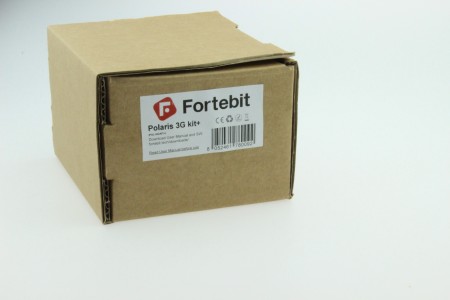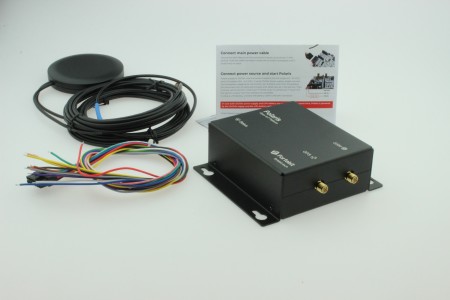Review: Fortebit Polaris 3G Kit+
September 09, 2020
on
on
Fortebit sent us their Polaris 3G kit+ for review and it arrived in a small brown anonymous cardboard box bearing a simple label indicating what was inside. It felt a bit like opening a Christmas present when you’re not sure exactly what you’ve got.

With all the box contents and manual laid out on the bench, it became clear what we are dealing with here. The manual reveals this is a GPS tracker unit. It can be installed in vehicles or high-value mobile equipment to track their movements. The unit could also be concealed within a piece of expensive machinery or plant equipment that you are not expecting to be moved (providing signals to and from the antennae are not attenuated). An attractive feature of this unit is its open source software; anyone wanting to expand or modify the unit’s functions is at liberty to do so. We'll come back to the details of the software and its possibilities later.
The GPS tracker itself comes in a well-made robust metal housing finished in black which is not weatherproof. A GSM and GPS antenna, LiPo backup battery and cable set are included as accessories in this kit. If you don’t need the battery or the accessories and housing, you can buy a more basic version of the kit and possibly save a few Euros. The Polaris 3G kit + reviewed here is the most comprehensive version of the tracker kit.

A 12-way connector with colour-coded flying leads plugs into the board-mounted main power supply and I/O connector. The two antennae cables are clearly labeled so there shouldn’t be any confusion as to which one goes where. Our first impression is of a neat and well-designed PCB with legible labeling.

With all the box contents and manual laid out on the bench, it became clear what we are dealing with here. The manual reveals this is a GPS tracker unit. It can be installed in vehicles or high-value mobile equipment to track their movements. The unit could also be concealed within a piece of expensive machinery or plant equipment that you are not expecting to be moved (providing signals to and from the antennae are not attenuated). An attractive feature of this unit is its open source software; anyone wanting to expand or modify the unit’s functions is at liberty to do so. We'll come back to the details of the software and its possibilities later.
The GPS tracker itself comes in a well-made robust metal housing finished in black which is not weatherproof. A GSM and GPS antenna, LiPo backup battery and cable set are included as accessories in this kit. If you don’t need the battery or the accessories and housing, you can buy a more basic version of the kit and possibly save a few Euros. The Polaris 3G kit + reviewed here is the most comprehensive version of the tracker kit.

A 12-way connector with colour-coded flying leads plugs into the board-mounted main power supply and I/O connector. The two antennae cables are clearly labeled so there shouldn’t be any confusion as to which one goes where. Our first impression is of a neat and well-designed PCB with legible labeling.
Technical characteristics
The key features of the Fortebit Polaris GPS tracker can be summarized as follows:| Power Supply Voltage (VEXT) | 8-36 VDC ( 2 A max.) |
| Backup Supply Voltage (VBATT) | Lithium battery ( optional ) |
| Cellular 3G Modem | 3G Modem (Penta-/Quadband) |
| Positioning constellations | GPS, GLONASS, BeiDou, Galileo and QZSS open service L1 |
| Internal Sensors | 3-axis accelerometer, MCU temperature |
| External connections | Analogue/digital input, digital outputs, CAN Bus (CAN 2.0A/B ), GPS (SMA) antenna, 3G (SMA) antenna |
| Internal connections | 16-way standard MikroBUS, 24-way expansion DIP header, MicroSD-card slot, Micro-SIM, 10-way SWD debug header, Micro-USB, Lithium battery |
Read full article
Hide full article


Discussion (0 comments)